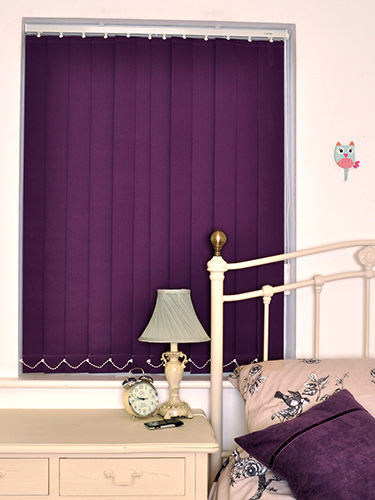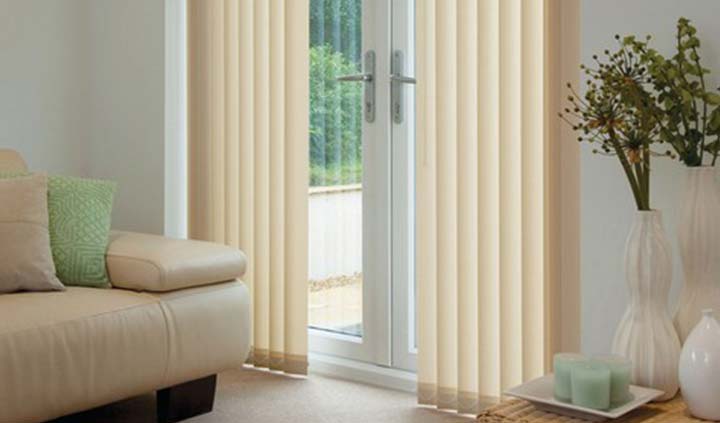Expression Blinds have something to cater for every taste and budget; from plain low cost fabrics, to contemporary patterns and prints in a vibrant choice of colours!
Vertical blinds are popular due to their versatility; they can not only be open or closed, but can be tilted to any angle to suit the user. This allows for increased privacy and protects from direct sunlight whilst maintaining optimum light levels in the room.
We can manufacture vertical blinds to fit curved or angled bay windows, French doors and sloping windows. We can also supply blackout vertical fabrics to darken the room if required, and hard-wearing PVC options are available too. There is also the option of 3.5 or 5 inch slats to create your desired look!
If you have children or pets (or both!), you can have peace of mind, knowing that we ensure every blind is fitted in line with legal safety requirements. You can also ask us any questions you may have about this- we’d be happy to answer!






















